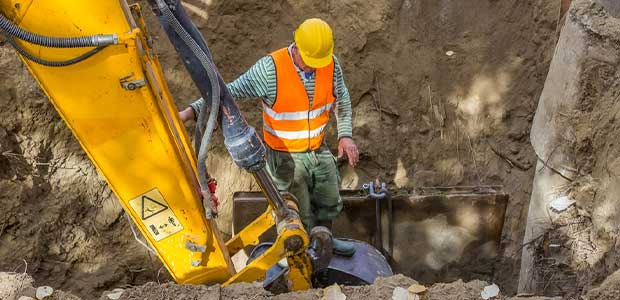
South Dakota Trench Collapse Leads U.S. Department of Labor to Remind Employers and Workers of Serious Excavation Hazards
Trench collapses are one of the most dangerous hazards in the construction industry.
- By Shereen Hashem
- Aug 19, 2021
A life was taken too soon when an excavation company’s owner died while fixing an underground sewer line in Rapid City, SD when the trench around him collapsed. His life ended under thousands of pounds of dirt just four days before Christmas in 2020, according to a press release. Around six months later, two other workers avoided the same type of incident in separate trenches in Rapid City, as well. One of them suffered from a minor injury while buried in dirt up to his waist for several hours until rescued, and the second was removed from a narrow eight-foot trench.
Trench collapses are one of the most dangerous hazards in the construction industry. From 2011 to 2016, trench collapses caused 130 deaths in the industry—all of them were preventable if employers followed the required safety measures.
“In recent months, we have seen an increase in trench-related inspections during this construction season, especially in Rapid City,” explained U.S. Department of Labor Occupational Safety and Health Administration Area Director Sheila Stanley in Sioux Falls. “In a matter of seconds, thousands of pounds of soil can bury workers and turn a trench into a death trap. We cannot overemphasize that employers must review safety measures and take necessary actions to prevent serious injuries or worse.”
Safety procedures must be implemented by trenching and excavation industry employers to protect employees at all costs. The employers must also train employees on how to evaluate job sites for potentially hazardous situations as well as ensure subcontractors follow safety regulations. OSHA has a national emphasis program on trenching and excavations.
Trenching standards require employers to require and ensure the use of protective systems in trenches deeper than five feet as well as keep other materials at least two feet from the edge of a trench. In addition, the employer must ensure that a knowledgeable person inspects trenches, keeps it free of standing water and atmospheric hazards and ensures complete safety for a worker to enter and exit.
The agency engages in outreach efforts with local and national partners to educate employers and workers about trench safety. In February 2021, OSHA, the South Dakota State University Engineering Extension Program and the South Dakota One Call Notification Board signed a two-year alliance focused on educating employees and employers about cave-ins, being struck-by heavy equipment, falling loads and vehicular traffic near excavation operations.
OSHA’s trenching and excavation webpage provides additional information on trenching hazards and solutions, including a safety video.
About the Author
Shereen Hashem is the Associate Content Editor for Occupational Health & Safety magazine.